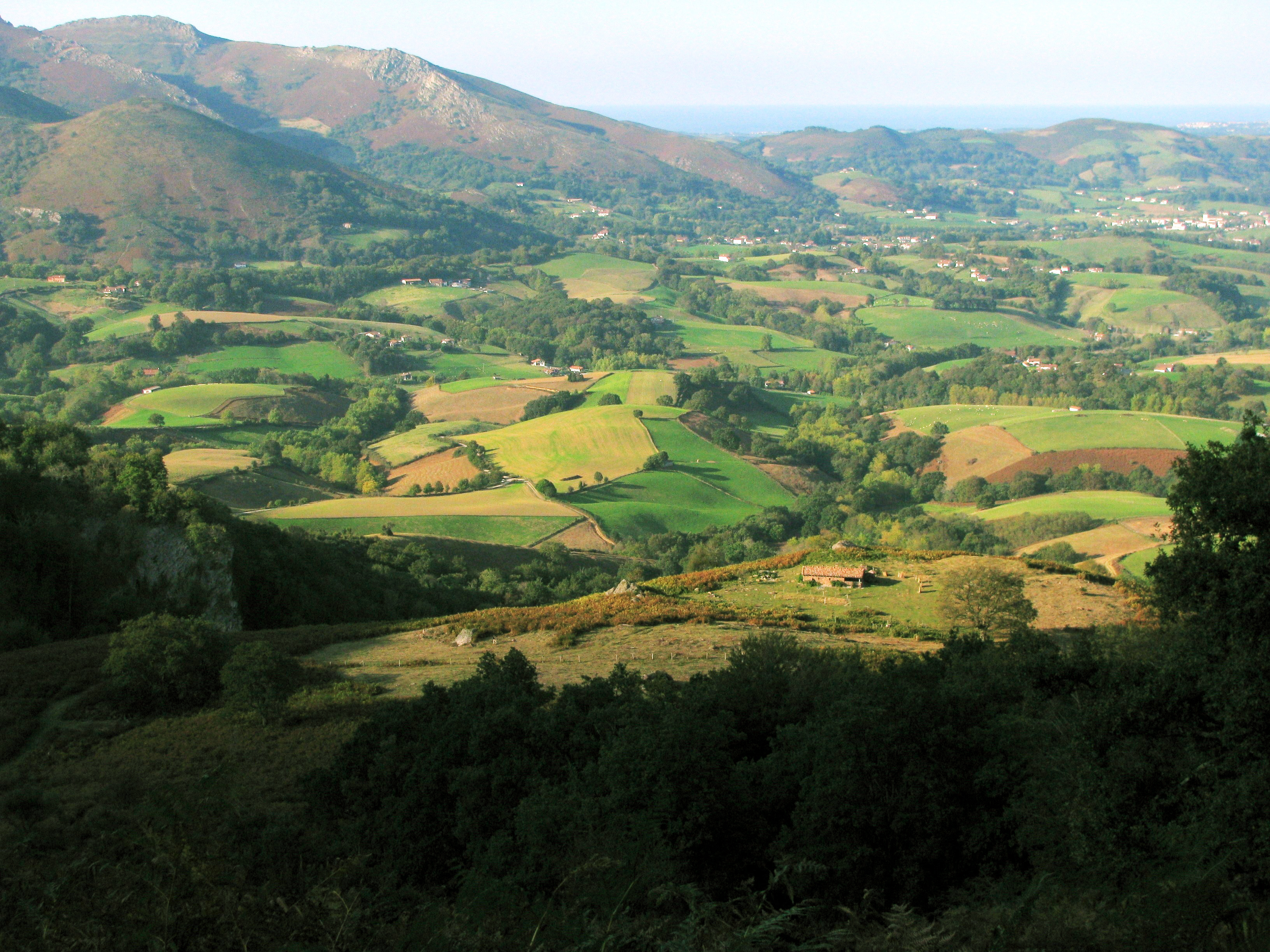Basque ethnography at a glance
The geographical analysis of the landscape of Lapurdi is approached at three levels perfectly defined in the high mountains (Garazi…), and which slip away southwards towards the ocean, along the axis of the Pyrenean mountain.
The typical landscape of Sara and surroundings shapes up as follows: 1) summer pastures and huts for shepherds (etxolak) on the edge of a forest (oaks and some beeches) in the foreground; 2) on a second level, the middle mountain, where livestock housing (bordak) and the odd dolmen coexist —from Urio Harriak, a steep slope drilled with prehistoric caves, we make out the rocky path of the stream that leads up to Akoka to the left —; 3) and the level of the permanent habitat further down, parcelled and irrigated by roads, with its cultivated fields (maize fields mostly, for wheat would not be sown on sloping grounds) and meadows, a landscape dominated by the Bizkailuze ridges and the hermitage of Arantza, which stands on the hillside of Atsulai as a lighthouse, shining the way into the heart of the city (karrika) of Ainhoa.
That landscape is now lost: abandonment of summer grazing land started at the beginning of the 20th century and forests have since grown back; middle-mountain commons (herriko lurrak), a former ground for new clearings, forest work, animal housing and natural grassland, are in a midst of a depression; disuse of moorland resulted in untamed, lush scrubland and brush-covered hills, and the badly exposed and pronounced slopes extend their sway without containment. People in the lowlands do no longer live in an economy that is becoming more anachronistic, and thus nostalgic, by the day.
In the 1950s a good many farmsteads (etxaldeak) owned 1 to 5 ha of land. Until the 1980s small holdings with sizes of 5 to 20 ha were eliminated (48 % in France between 1988 and 2010); share-farming extinguished, agricultural rental was introduced, and a great number of the rented mountain huts —named with the suffix –ko and the term borda added to the name of the farmstead to which they belonged— were later sold. The rural world was called into question.
According to a census by the Agricultural Chamber of the Basque Country —Euskal Herriko Laborantza Ganbara (EHLG)—, a quarter of the farmsteads have disappeared since 2010 (here like elsewhere) and more than 10 000 ha have been lost. However, there has not been such a sharp decline in the current amount of labour on the farms. With an utilized agricultural area of 28 ha, the average farmstead in Lapurdi today is two times smaller than the French and employs nearly as many workers.
Along with the classical destructive (of nature and people) productivism sustained by a single trade union, significant steps are being made towards a diversified rural agriculture that advocates for food sovereignty, and thus, a healthy food system. Fostered by the EHLG, it favours the creation of quality standards while engaging in the pursuit for value-added products. It falls within an agricultural policy defined by local producers that empowers short distribution channels. Attention is paid to the living environment of human beings in response to the blind standardized industrial productivist model and its trail of destruction, waste and potentially fatal alterations. Dominant productivity policies try to control our food (GMOs or Genetically Modified Organisms) and show no respect for the work of human hands.
Michel Duvert – Etniker Iparralde – Etniker Euskalerria Groups
Translated by Jaione Bilbao – Language Department – Labayru Fundazioa




